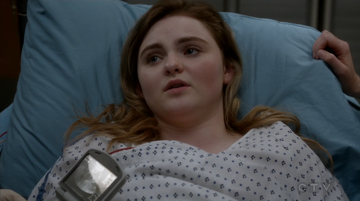
The Unseen Epidemic: A Secret Pregnancy at Fourteen Shocks Grey Sloan
The fluorescent lights of Grey Sloan Memorial Hospital hummed with their usual indifference. Doctors rushed between surgeries, residents bickered over protocols, and the constant beeping of machines formed a dissonant symphony of life and death. But today, a tremor ran beneath the surface, a ripple of disbelief and concern that threatened to disrupt the carefully orchestrated chaos. The source? A secret pregnancy. The patient? A fourteen-year-old girl.
The news, whispered in hushed tones in the scrub room and over hurried coffees in the cafeteria, hung heavy in the air. Fourteen. The word echoed, carrying with it the weight of lost innocence, shattered futures, and the stark reality of a world that often failed its most vulnerable. The case, initially handled with the detached professionalism expected of a teaching hospital, quickly became a lightning rod for internal debate and emotional reflection.
Dr. Meredith Grey, a seasoned surgeon whose own life had been marked by unexpected pregnancies and complicated relationships, found herself unexpectedly moved. She remembered her own struggles, the isolation, the fear, and the overwhelming responsibility. Looking at the young girl, Lily, pale and withdrawn in her hospital bed, Meredith saw a younger version of herself, a girl thrust into adulthood far too soon.
The impact on the residents was equally profound. For some, like the ambitious and driven Jo Wilson, Lily's situation served as a stark reminder of the fragility of life and the choices that shaped it. Jo, who had clawed her way out of foster care and a difficult past, saw in Lily a reflection of the vulnerability she had fought so hard to overcome. The case fueled her determination to be a compassionate and unwavering advocate for her patients, regardless of their age or circumstance.
For others, the secret pregnancy raised uncomfortable questions about their own values and societal failures. Dr. Andrew DeLuca, known for his empathy and gentle nature, wrestled with the ethical implications of the situation. He questioned the resources available to young mothers, the societal pressures that led to secret pregnancies, and the responsibility the hospital bore in providing comprehensive and unbiased care. He found himself researching support groups and parenting classes, driven by a desire to ensure that Lily received the guidance and support she so desperately needed.
The case also exposed a stark divide in perspectives. Some senior doctors, hardened by years of witnessing the realities of trauma and illness, approached the situation with a pragmatic detachment. They focused on the medical aspects, on ensuring Lily's physical health and the safe delivery of her child. Others, deeply affected by the human cost, argued for a more holistic approach, emphasizing the importance of mental health support, family counseling, and long-term care.
The secret pregnancy forced Grey Sloan to confront its own biases and assumptions. The staff, accustomed to dealing with complex medical cases, were challenged to navigate the emotional and ethical complexities of a young girl facing motherhood. They grappled with questions of consent, confidentiality, and the responsibility of reporting suspected abuse. The case served as a poignant reminder that medicine was not just about treating physical ailments, but about understanding the human condition and providing compassionate care to individuals in their most vulnerable moments.
Ultimately, Lily's case resonated beyond the confines of the hospital walls. It became a microcosm of a larger societal issue, highlighting the need for better sex education, accessible contraception, and a more supportive environment for young people facing unplanned pregnancies. The shockwave that rippled through Grey Sloan served as a wake-up call, reminding everyone that behind every statistic and every diagnosis, there was a human being, a story waiting to be heard, and a life deserving of care and compassion. Lily's secret pregnancy was a painful reminder of the unseen epidemic plaguing society, an epidemic that demanded attention, empathy, and a collective commitment to creating a future where no fourteen-year-old girl felt alone and afraid. The fluorescent lights of Grey Sloan still hummed their indifferent tune, but now, within the walls, a new awareness had taken root, a renewed commitment to healing not just bodies, but broken lives.
